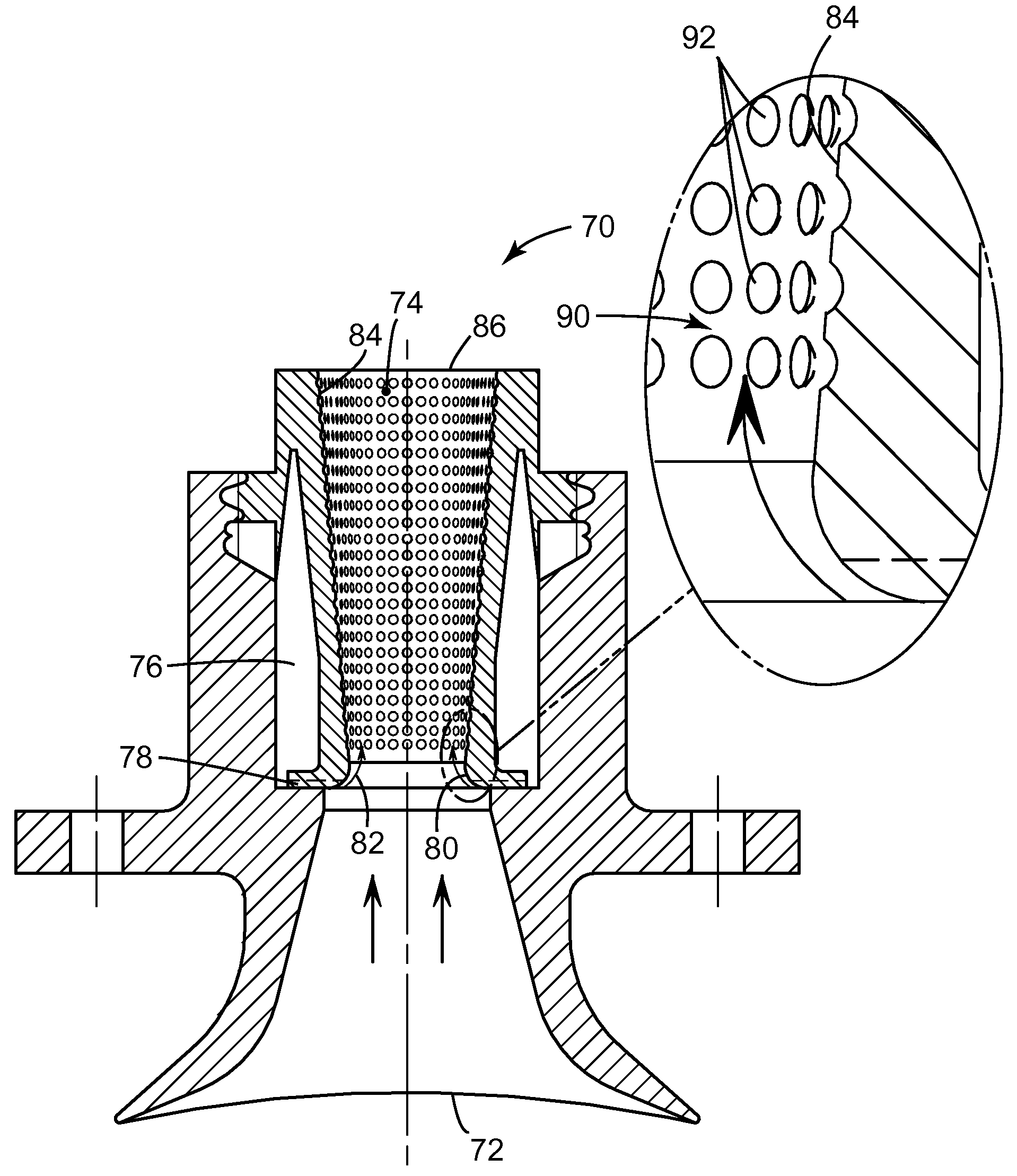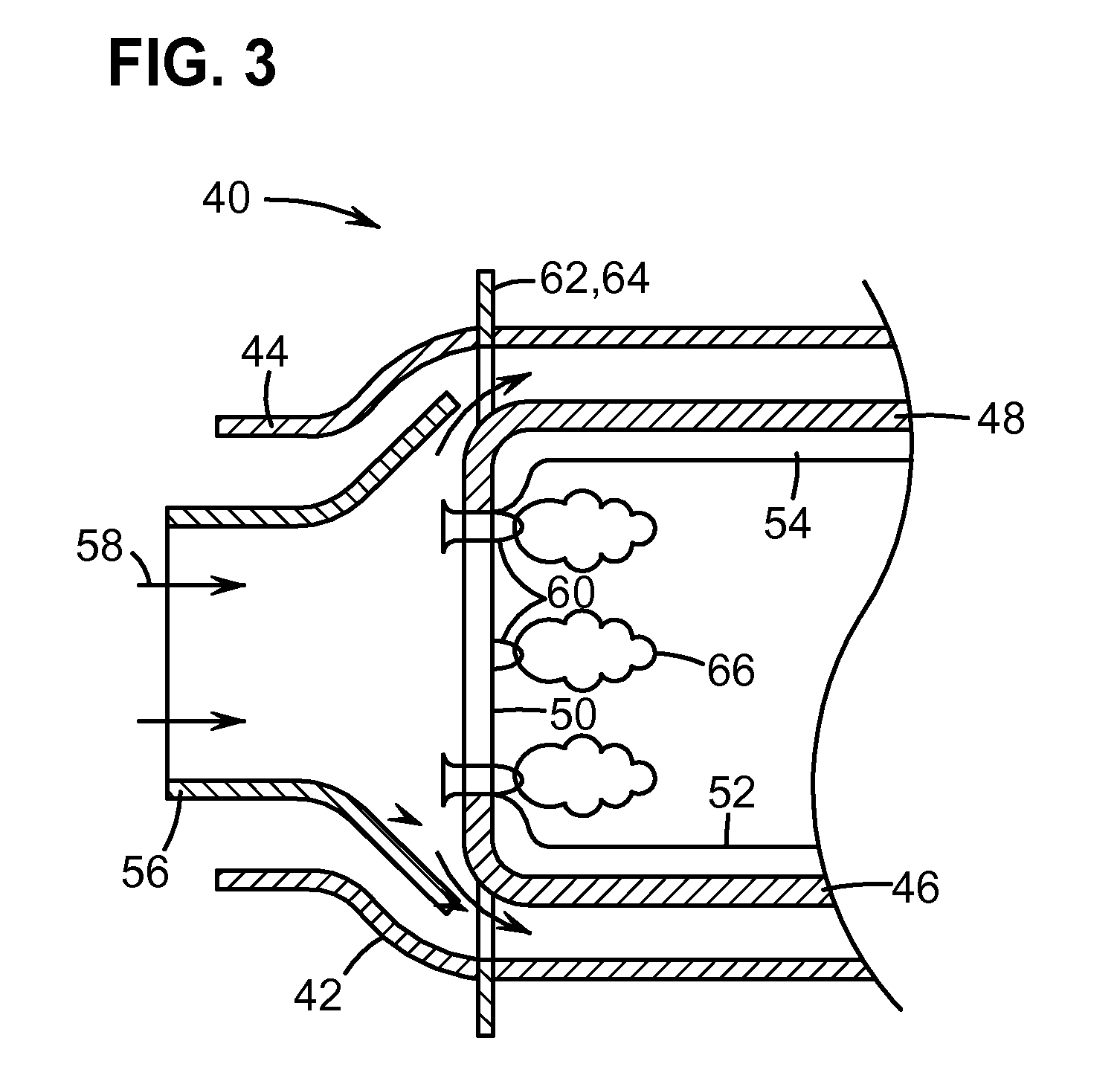Method and apparatus for enhanced mixing in premixing devices
- Summary
- Abstract
- Description
- Claims
- Application Information
AI Technical Summary
Benefits of technology
Problems solved by technology
Method used
Image
Examples
Embodiment Construction
[0029]Referring now to the drawings, wherein like reference numerals designate identical or corresponding parts throughout the different views, several embodiments of the premixing devices being disclosed will be described. In the explanations that follow, exemplary embodiments of the disclosed premixing devices used in a gas turbine will be used. Nevertheless, it will be readily apparent to those having ordinary skill in the applicable arts that the same premixing devices may be used in other applications in which combustion is primarily controlled by premixing of fuel and oxidizer.
[0030]FIG. 1 illustrates a gas turbine 10 having a compressor 14, which, in operation, supplies high-pressure air to a low-emission combustor 12. Subsequent to combustion of fuel injected into the combustor 12 with air (or another oxidizer), high-temperature combustion gases at high pressure exit the combustor 12 and expands through a turbine 16, which drives the compressor 14 via a shaft 18. As understo...
PUM
| Property | Measurement | Unit |
|---|---|---|
| Fraction | aaaaa | aaaaa |
| Surface roughness | aaaaa | aaaaa |
| Surface roughness | aaaaa | aaaaa |
Abstract
Description
Claims
Application Information
 Login to View More
Login to View More - R&D
- Intellectual Property
- Life Sciences
- Materials
- Tech Scout
- Unparalleled Data Quality
- Higher Quality Content
- 60% Fewer Hallucinations
Browse by: Latest US Patents, China's latest patents, Technical Efficacy Thesaurus, Application Domain, Technology Topic, Popular Technical Reports.
© 2025 PatSnap. All rights reserved.Legal|Privacy policy|Modern Slavery Act Transparency Statement|Sitemap|About US| Contact US: help@patsnap.com



